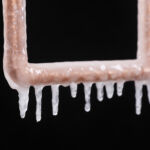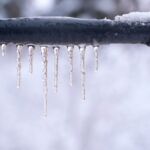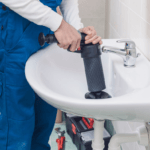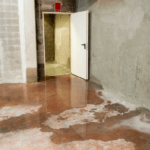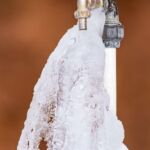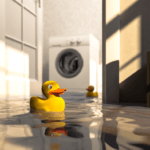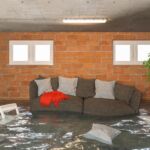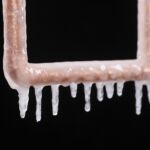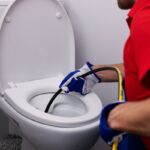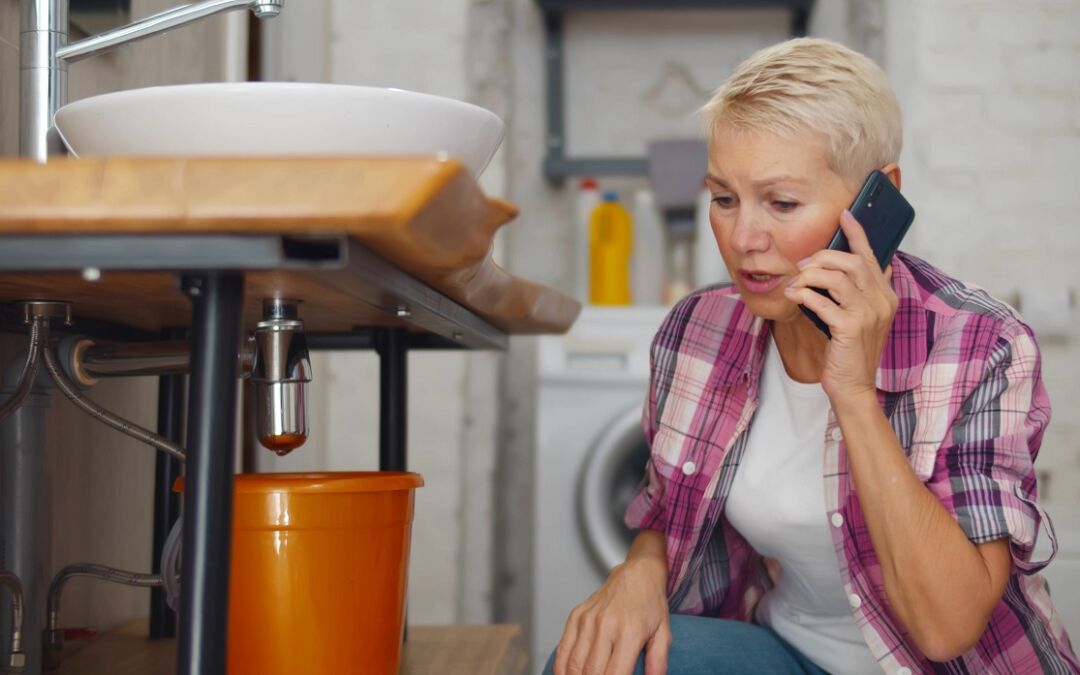
Jul 1, 2023 | Leaking Pipe, Plumbing services
If you discover a leak in your pipes, it is imperative that you act quickly to mitigate further damage to your home and minimize further costs. There are various quick fixes you can employ while waiting for professional emergency plumbers near you to come and address the situation.
Turn Off the Water
As soon as a pipe starts leaking, the first step should be to turn off its source. This may involve simply switching off its valve; however, for optimal results, it’s usually wiser to shut off all your home’s water sources at once in order to minimize damage caused by further leakage and its subsequent worsening. This will prevent further leakage and help to minimize its severity and associated repair costs.
Drain the system
Open the hot and cold at the lowest fixture this is usually the laundry tub in the basement. This will empty the system and release the pressure helping to minimize the damage .
Clean Up the Surrounding Area
Even the strictest maintenance routine may not prevent all leaks from forming in your home. While these leaks may initially appear minor and cause no real harm, if left unattended, they could grow into larger problems quickly if left alone—knowing how to handle these plumbing situations quickly and efficiently is vital to the health of your home’s infrastructure.
Cleanup around a leak is also key to mitigating its impact and getting ready for your trusted emergency plumber to visit. Epoxy putty can help here; just break off a suitable-sized piece, work it between your hands until malleable, and then apply it to the crack or hole. Duct tape can also serve as an emergency repair solution; wrap several layers around the leak to keep it contained until the plumber arrives.
Note: Do not consider this a permanent solution, and call our 24/7 same-day emergency plumbers at 343-305-1172 to quickly rectify the situation.
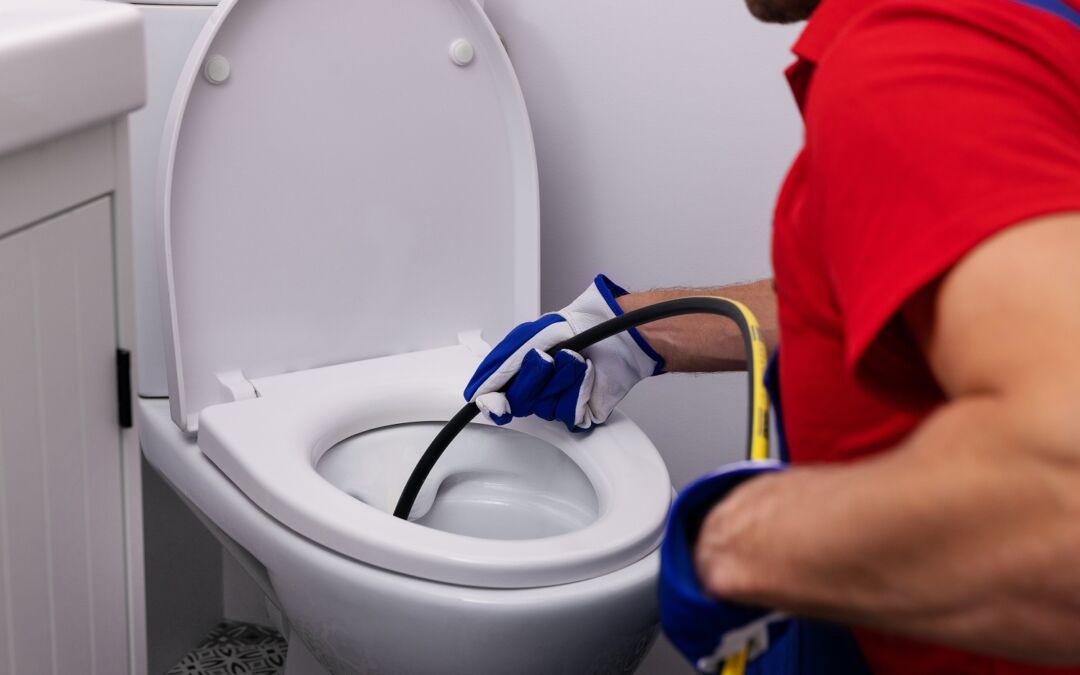
Jun 29, 2023 | Drain Cleaning, Plumbing services
Dealing with a clogged toilet can be frustrating, messy and unpleasant. This article will provide you with innovative solutions, revealing several ways to unclog your toilet using common household items or tools.
If all else fails, professional help from an emergency plumber near you is always an option.
Read on to equip yourself with these unconventional yet practical methods for unclogging your toilet, ensuring that you’re prepared in the most inconvenient of circumstances.
Dish Soap
Liquid dish soap can do more than simply remove grease from dinner plates or pots and pans; it also has the power to loosen clogged waste and force it down the drain. Liquid soap molecules possess both hydrophobic (which repels water) and hydrophilic properties—think of them as small lubricators.
Pour one cup of hot dish soap into your toilet and allow it to sit for several minutes before flushing it away; hopefully, this should clear away any obstructions in the drainpipes. If that does not do the trick, add several cups of warm water from waist level (but not boiling!), to add extra pressure that might break apart any stuck particles and move them down your pipes more effectively.
Air Blaster
Clogged toilets can seem like the end of the world; waste and water back up into their drain, creating an unsafe and unpleasant situation that must be quickly remedied in order to remain safe for human usage.
An air blaster is an effective tool that forces air into pipes to clear away clogs. You can purchase one that looks like a plastic plunger or a more sophisticated mechanical device with a trigger at your local hardware store, quickly to force air through it or pull the trigger. Make sure you wear goggles or a face shield then blast – repeat until your clog has cleared away!
For the most stubborn obstructions, there is also the option of hiring a same-day emergency plumber for an effective solution: call Tap Tech today at 343-305-1172.
Wire Hanger
One of the most efficient tools available is a wire hanger when combined with hot water in a pan. Although a plumber’s snake may provide better results when breaking apart and pushing down on clogs, in an emergency, a wire hanger may do just as well.
Start by unwinding a wire coat hanger until it is straight, covering one end with a cloth (duct tape is great!) so as not to scratch porcelain surfaces, and pushing this end through your toilet drain, prodding and twisting it to break up or dislodge any blockages that might exist.
Once the makeshift clog snake is in place, pour a large quantity of hot water into the toilet bowl at waist level to create pressure and force through any clogs that may have formed in order to clear out drains of all obstructions. Repeat this process until all obstructions have been cleared away and drains have become free-flowing again.
Please note: excessive use can cauce scratching on the porcelain and is not generally used by proffesionals for this reason.
Vinegar and Baking soda
If you have turned off the water to your toilet as part of a safety measure, try using Vinegar and baking soda as an inexpensive and non-invasive way to clear away stubborn clogs. Pour some into the bowl and watch as its fizzing reaction breaks down waste while degrading any solid debris in its path.
If these solutions still don’t work, professional help might be needed; call in an emergency plumber from Tap Tech at 343-305-1172.
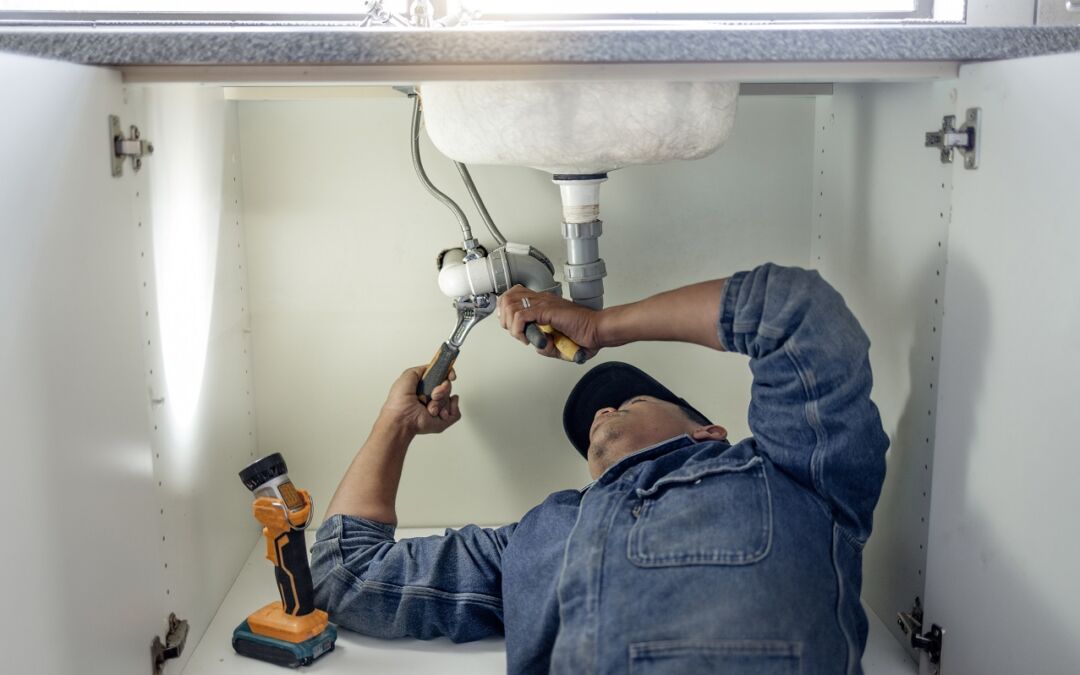
Jun 27, 2023 | Leaking Pipe, Plumbing services
Leaks from under the sink can be both unsightly and hazardous; mouldy puddles could form within your cabinet if left unresolved for too long. It is imperative that this issue is taken care of quickly before it escalates into a more serious concern, bringing with it damaged furniture and potential health complications of mould and mildew.
Your problem might be fixable by yourself with some troubleshooting tips; however, if your knowledge of plumbing tasks is limited, it would be wiser to seek professional assistance from a reputable emergency plumber.
1. Tighten the Slip/Compression Nuts
If you notice water pooling under your sink cabinet or seeping through to your floors, or worse yet, leaking all over them, now is the time to take action. A leaky drain can not only be inconvenient, but could lead to mould growth and structural damage that threatens health and well-being.
If the leak is due to loose slip nuts (compression nuts), tighten them using for optimal results, use a pipe wrench or adjustable pliers.
If the leaks are due to corrosion, you will need to replace them with new ones. Before making your replacements, apply Plumber’s Tape around all threaded areas in your drain to create a watertight seal and avoid over-tightening any nuts, as this could crack them and create leakage issues. If all else fails and there’s still leakage present after doing everything right, contact a professional same-day plumber near you who will be able to identify and address it efficiently.
Call Tap Tech at 343-305-1172 for all your emergency plumbing needs.
2. Check the Connections
If your slip-nuts remain loose and your pipes still leak, The Home Depot reports this could be due to compromised connections—possibly when pipe threads or fittings have worn down and no longer provide an effective seal.
To locate the source of leaking pipes, carefully examine the area underneath your sink. Look out for signs like puddles or moist and smelly floors, which indicate an ailing plumbing system, or check for loose drain covers or garbage disposal units that might also indicate problems.
If you notice water leaks, an easy way to pinpoint their location is by placing paper towels around them and checking them for wet spots. For longer-term solutions, it would be wiser to contact a professional plumber near you.
3. Apply Teflon Paste
On occasion, tightening slip nuts between drain pipes alone won’t suffice to stop leaks; when this occurs, Teflon Paste may provide the ideal solution.
Loosen the nuts to expose the washer and apply the paste around it then hand tighten the nut and make a guatrter turn with channel locks. If the leak still persists, consider calling in professional help, as they’ll likely provide more permanent solutions.
Same-Day Plumbing: 5-Star Service
Don’t keep yourself and your family in the lurch in the event of a plumbing disaster. Keep Tap Tech in your contact list so that you can have a professional plumber dispatched to your home with expert same-day service!
Call now at 343-305-1172 or book an appointment online.
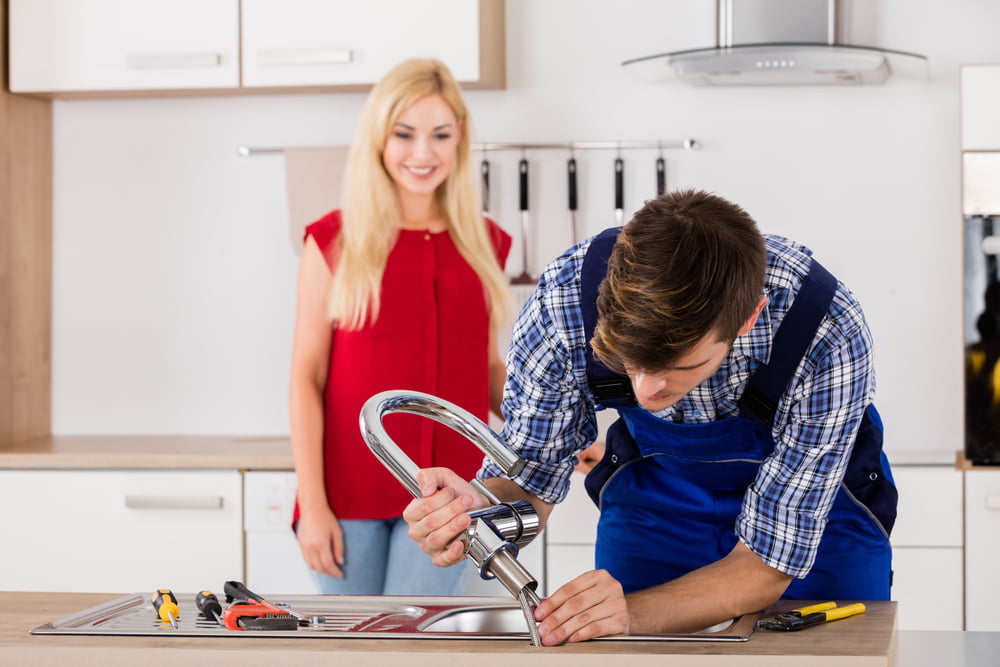
Jun 25, 2023 | Blogs, Plumbing services
A home’s plumbing system is crucial to keep a house functioning properly. However, it can be easy to overlook maintenance until there is a problem.
As a new homeowner, it is important to have some basic plumbing knowledge, so you can avoid major problems in the future. These top 8 plumbing tips will help you do just that!
1. Know Your Water Shut-Off Valve
If you have water flooding your house, knowing where the shut-off valve is located can save you money on repairs. It can also reduce the risk of injury to family members.
Look for a copper or metal pipe that extends from the ground up to your home’s foundation, and follow it to your water meter. The shut-off valve should be right before the meter. You can also find it near your exterior spigots and hose bibs. It should have a handle that turns freely.
2. Keep a Plunger and Drain Snake at Home
The plunger is an efficient and inexpensive way to handle clogs. It’s a tool every homeowner should keep handy.
For serious clogs, you can also use a drain snake, sometimes called a wire drain auger. Feed the cable into a drain until you feel resistance and the tip breaks up or catches on a clog; be sure to turn off the power while you’re working with a drain snake.
3. Protect Your Pipes from Freezing
As winter approaches, the risk of pipes freezing and bursting skyrockets. Frozen pipes are one of the most common causes of home damage and can lead to thousands of dollars in water and property damage.
Insulate exposed pipes in unheated areas: You can purchase foam insulation sleeves, available at your local hardware store, to wrap around your exposed pipes. Turn on the faucets to a slight drip during extremely cold weather, and ensure that you close any outside spigots.
4. Maintain Your Water Heater, Cistern and/or Well
Draining your water heater once a year is important to prevent sediment build-up that shortens the lifespan of the unit, while also helping to save on energy costs.
5. Know Where Your Water Supply and Drain Pipes Are Located
The water supply lines are found in many places throughout your house, delivering fresh water to shower heads, sinks, faucets and other household appliances. In some cases, these lines also lead to the water heater and outdoor hose spigots.
Your drain-waste-vent line (also called a sewer clean out) extends from your home to the municipal sewer system or septic tank. You should always know where this line is located to avoid damaging it.
6. Don’t Place Garbage Down the Drain
Food scraps, particularly greasy ones, can build up and plug drain lines. Grease from cooking oils, pan drippings and bacon should never be poured down the drain.
Place strainers over your sink and shower drains to catch hair, soap scum, and other debris before they can clog the pipes. Be sure to only flush toilet paper and human waste down the drains; anything else, including those “flushable” wipes, can cause a serious clog. Ensure that no one in the house is flushing items like paper towels, personal products, napkins, or diapers.
Foods that expand should not be put down the disposal either; this includes pasta, rice and bread. Eggshells and uncooked oats also pose a threat, since they are likely to collect other debris and form clogs.
7. Know Where Your Water Main Is Located
It’s important for homeowners to know where their water main is located and how to turn it off. This can save thousands of dollars worth of damage in the event of a major plumbing issue that requires immediate attention.
The water main shut-off valve is typically found on the home’s plumbing line as it enters from the street, usually in a basement or crawl space.
8. Turn Off the Water
The quicker you can shut off your water, or direct a plumber to the problem, the better chance you have of minimizing damage. This is especially important if you have frozen pipes.
These simple tips can help you avoid costly plumbing problems! However, in the event that you need an emergency plumber, Tap Tech is here, 24/7 with same-day service to rectify the issue.
Get in touch with Ontario’s premier emergency plumbers: call 343-305-1172 or book your visit online today!

Jun 23, 2023 | Plumbing services
Most homeowners take the availability of clean, running water for granted. That is, until a plumbing emergency occurs.
While many of these emergencies are the result of neglect or inappropriate do-it-yourself fixes, they can be avoided. Here are some preventative steps that you can take to keep your home plumbing safe and healthy.
Be Proactive About Maintenance
Plumbing horror stories are enough to make any homeowner shiver. Things get flushed down drains that you would never dream of putting in your mouth (from dentures to dead wildlife), pipes freeze and burst during frigid winters, toilets and appliances malfunction, creating leaks.
Getting ahead of these plumbing emergencies by performing some preventative maintenance can help you save money and minimize damage to your home or business. And having an emergency plumber near you saved in your contacts will help should you need same-day, 24/7 service.
When temperatures drop below freezing, check to make sure that any exposed water pipes in unheated areas of your home (such as basements or crawl spaces) are adequately insulated and heated to keep them from freezing. In addition, be sure to shut off the water main and sewer line whenever your home is undergoing any major plumbing service, like rerouting or installing new pipes. Also, be sure that your sump pump is functioning properly to avoid flooded basements in the event of heavy rains.
Have Your Pipes and Fixtures Checked Regularly
Many homeowners don’t think about their plumbing until something goes wrong, but staying on top of it can prevent costly emergencies. Leaking pipes and fixtures can lead to high water bills, structural damage, and health issues. These plumbing concerns can result from a variety of factors, including aging pipes that crack and break easily, loose fittings, or improper installation. The most common signs of a plumbing issue are wet or discoloured drywall, puddles in the basement or kitchen, musty smells, and high water pressure.
It’s important to have a professional check your plumbing regularly, especially during winter, when freezing temperatures can cause pipes to burst. Other reasons to have your plumbing inspected are when you notice the smell of sewage in your home or yard, which could indicate a leak in the main sewer line.
Have Your Sewer Line Inspected at Least Once a Year
The sewer line carries wastewater and other household waste to the city’s main lines. It’s important to have it inspected at least once a year, because plumbing issues such as a broken line can lead to sewage backup and other nasty problems inside your home.
The most common signs of a plumbing issue with your sewer line includes gurgling drains, slow-draining bathtubs or laundry tubs, and toilets that overflow. You can also check your water bills, watch for rodent activity on or near your property, and pay attention to musty odours.
If you’re considering buying a new home, have the sewer line inspected before closing the sale.
Shut Off the Water
One of the best things that you can do when a problem occurs is to shut off the water as quickly as possible. This is especially important if you notice any signs of a problem, like gurgling drains, because these sounds can often indicate that something is wrong.
Locate the shut-off valve for the specific area where the problem is and turn it clockwise to shut off the water. Most homes have this valve located either in the basement, garage, or crawl space, but some older homes may not. If this is the case, call your local water provider to shut off the water at the main line.
Emergency Plumber Near You
Whether you’re a first-time homeowner or you’ve been in your forever home for several years, there is no doubt that plumbing problems can happen at any time. Whether you have a minor leak or a burst pipe, any plumbing issue that affects your home’s water supply should be considered an emergency.
These plumbing concerns require immediate attention from a same-day emergency plumber, who can help you avoid serious damage and expensive repair bills throughout your home’s infrastructure.
Get in touch for an upfront quote and same-day service! Call 343-305-1172 or book your emergency plumbing service online.
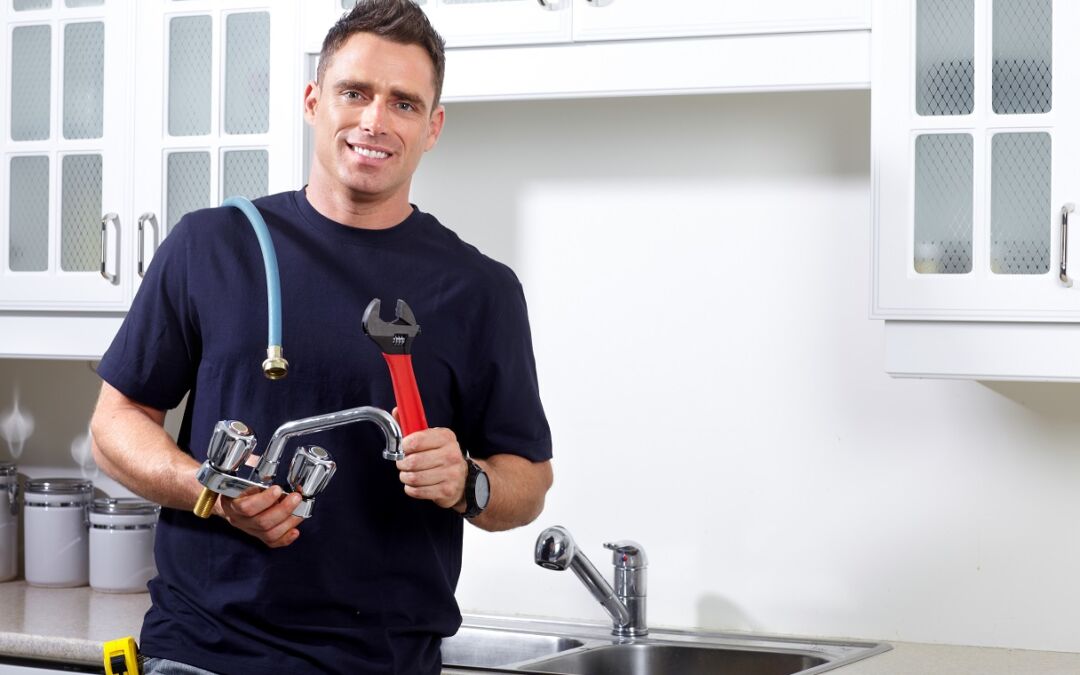
Jun 21, 2023 | Leaking Pipe, Plumbing services
Water leaks are frustrating, especially when they’re hard to find. Water leaks in your home can add up to thousands of dollars in wasted water and repairs. If you’ve noticed a leak or two after doing a quick inspection of your home, consider these potential causes when calling for an emergency plumber near you:
Shower Heads and Faucets
You may be surprised to learn that your faucets and shower heads can be the source of water leaks. If you have a leaky faucet, it’s usually easy to fix: just replace the washer inside. For a leaky shower head, try tightening the screws on the underside of it (or unscrewing them if they’re already loose).
If neither of those fixes work for you, then it might be time for some professional help from an experienced plumber—they’ll know exactly what’s going on with your plumbing system and how best to fix any issues before they become more costly problems down the road!
Leaky Toilet Flapper Valves
A leaking toilet flapper valve is the most common cause of household water leaks. The flapper valve is the rubber component that sits on top of your toilet tank and shuts off its water flow when you flush. If it doesn’t seal properly, it can cause a leak that wastes thousands of gallons of water each year.
To fix this problem:
Remove any excess debris from around or in between your flapper valve assembly; if there’s still an issue after doing so, try replacing it with another one (you may need to call a plumber near you for help).
Frozen Pipes
Deleted: The first step to preventing a frozen pipe is to make sure to leave your faucets running just a trickle. If you leave your home for an extended period shut off the main valve.That way, if one does freeze up and burst, it won’t cause damage throughout your home.
Conclusion
We hope that this article has helped you understand some of the most common causes of household water leaks.
If you’re still not sure what’s wrong with your plumbing or if you think there may be a leak somewhere in your home, we highly recommend calling a professional plumber who can help diagnose the problem and fix it quickly!
At Tap Tech, we provide first-class, same-day service—with no hidden fees, we always provide our rates up-front over the phone.
For 24/7 emergency plumbing with 5-star service near you in South Eastern Ontario, get in touch today: call +343-305-1172 or book online!







